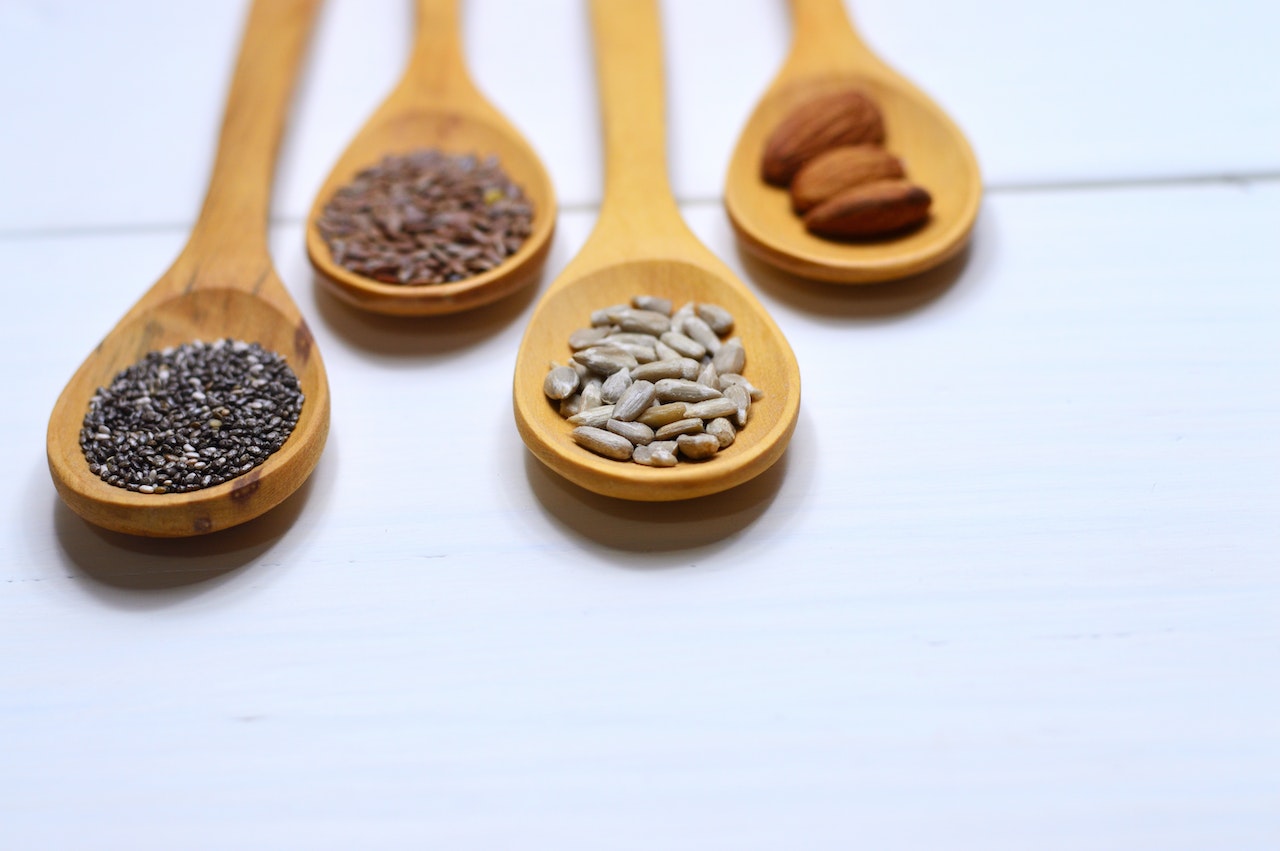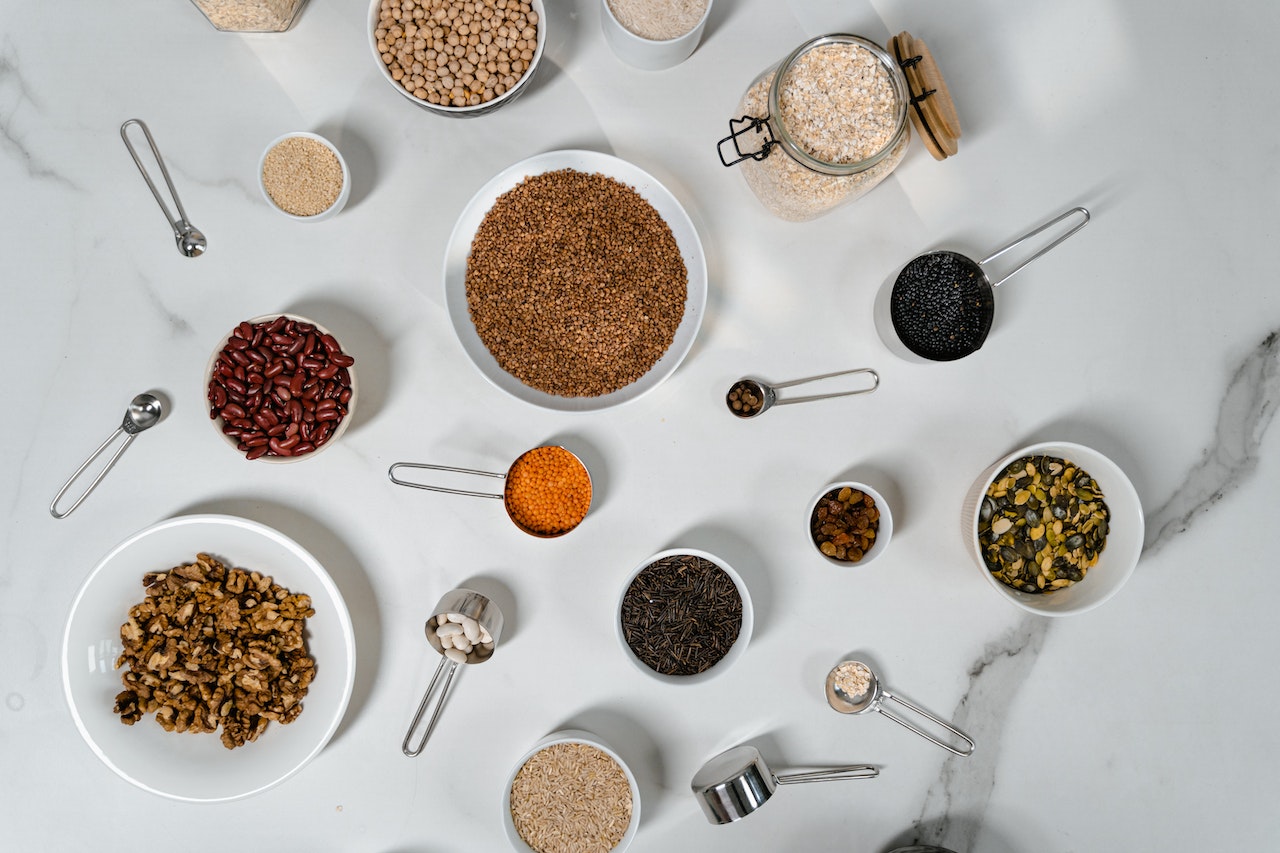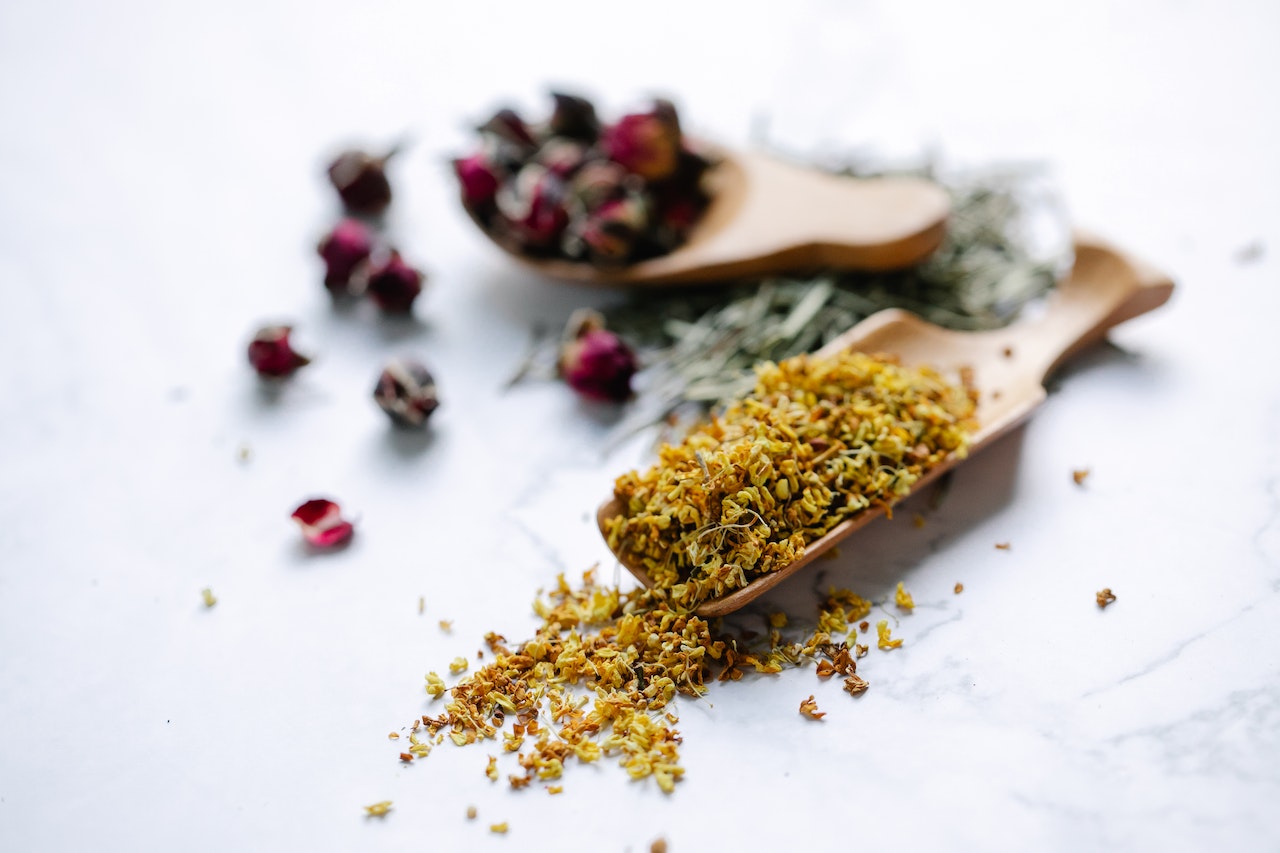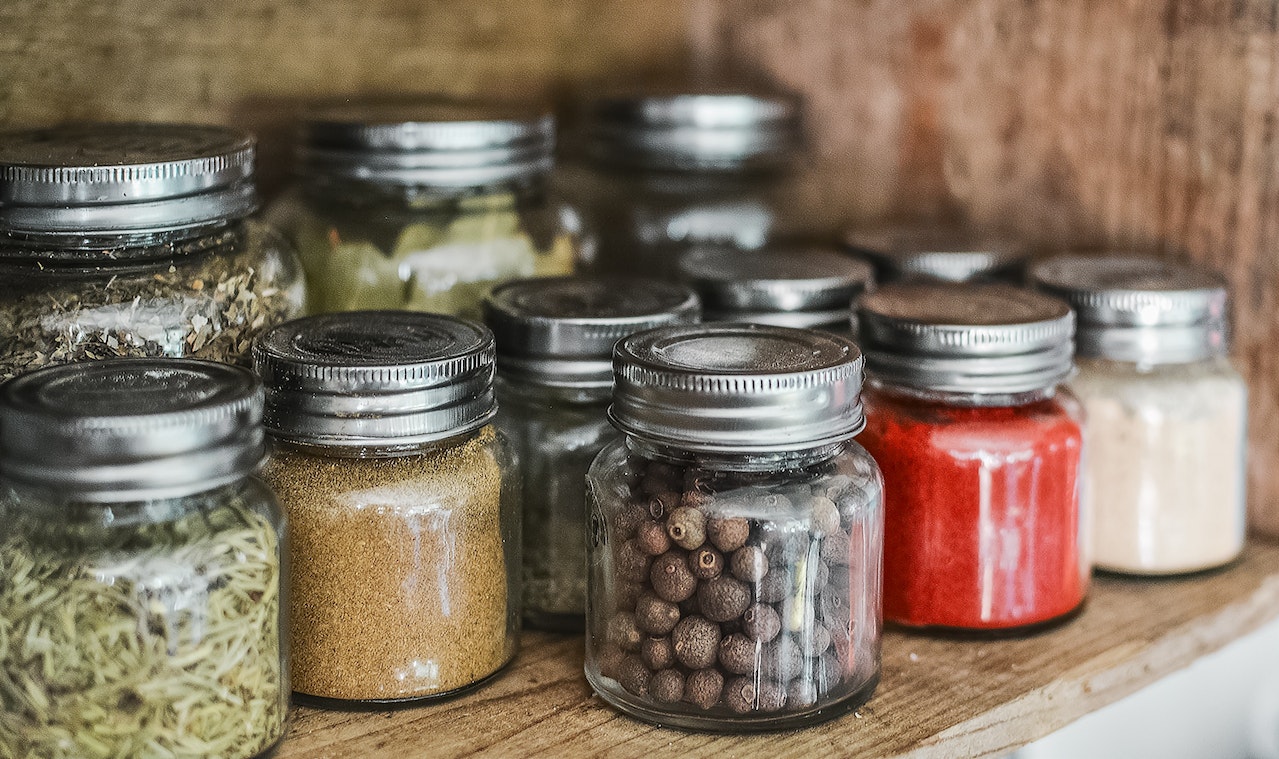Have you ever wondered which spices and Herbs you should have in your pantry? The Essential Spices and Herbs for Every Home Cook is the best resource for stocking your pantry, regardless of whether you’re just beginning to stock your spice cabinet or attempting to reduce clutter. The modest but potent presence of spices and herbs often elevates the realm of gastronomic pleasures. These fragrant components have been prized throughout history for their capacity to provide a variety of foods with depth, complexity, and distinctive tastes.
We’ll look at a wide range of spices and herbs in this article that belongs in your cupboard. These fundamental ingredients will open you to a world of sensations, enabling you to infuse your recipes with enticing tastes and scents. They range from time-honored classics to exotic and lesser-known types. Let’s go on this delectable adventure to learn about the important herbs and spices that will give your culinary creations life. So let’s get started!
What Are Spices and Herbs?
Spices and herbs are compounds made from plants that provide food taste. It is challenging to tell the two apart. The following plant components may be used to make spices: stems, rhizomes, leaves, flowers, fruits, bark, & seeds. Most people think of herbs as non-woody plants.
When did people start using herbs and spices as flavorings? That is unknown. It has been shown that onions and garlic were utilized 4,500 years ago. Before refrigeration, humans utilized spices to help preserve food. Both were used during religious rituals. Herbs and spices have a long history and were formerly a major source of wealth and power. Arab merchants developed early spice trade routes.
The Greeks widened the commercial routes to the Mediterranean. With the spice trade, the Roman Empire had considerable power and authority. To maintain their dominance, seafaring countries like Portugal, Holland, Spain, & Britain engaged in several conflicts and embraced the lucrative spice trade. The spice monopolies were broken up when pepper, cinnamon, nutmeg, and other significant spice farms were founded on tropical islands.
Spices and Herbs You Should Have in Your Kitchen

The aromatherapy, preservation, and therapeutic properties of spices, herbs, and seasonings have a long history. Originating from the Latin term “species aromatacea,” which means “fruits of the soil,” spices were subsequently sold as a commodity in early commerce. Let’s discuss the origins of spices, herbs, and seasonings and some of their uses in cooking. The pre-made shopping list template below includes our lists of the necessary spices and herbs and spice rack items that every kitchen should have. Enjoy!
Black Pepper
Despite being mistaken for a seasoning, black pepper, derived from the peppercorns of a pepper plant, is one of Western cuisine’s most widely used spices. Southeast Asia is the primary source of exports for black pepper. Both culinary and medicinal uses for this plant have been documented. It is also highly high in Vitamin K, a lesser-known vitamin that supports bone health and blood clotting.
The head of black pepper, most recognized for its spiciness, comes from the peppercorn’s seed and outer fruit. Due to its spiciness & how that impacts digestion, black pepper has several subtle health advantages. The most popular black pepper is crushed, which pairs nicely with meats like steak and chicken breast. Soups, stews, and homemade salad dressing, for example. Remember that crushed black pepper needs an airtight atmosphere to keep up properly!
Ginger
Ginger takes a long time to develop since it is a perennial plant. The stem of the ginger plant, also known as a rhizome, is a herb that grows underground. We get the rhizome known as ginger root at the grocery shop. Ginger is well-known for its culinary applications around the globe, but it is also used medicinally for its anti-inflammatory and nausea-relieving properties.
Ginger is quite adaptable. The Ginger is a popular ingredient in the cuisine of many Eastern countries, and it may be found in a variety of recipes, including those for baked products like gingerbread, sauces like honey-ginger barbecue sauce, and beverages like ginger beer, ginger herbal tea, & ginger ale. Ginger is a necessary spice to have on hand in your kitchen for a variety of events and dishes.
Parsley
The Mediterranean region is the home of one of the most often-used herbs, parsley. In Western cultures, parsley is often used for cooking as a garnish (put on top of the finished meal) and requires two years to mature. Vitamins, minerals, & antioxidants abound in parsley.
Freshly cut parsley is often used as a garnish for foods from many cultures. Parsley is often combined with other spices and used in sauces and soups in several European cultures. In addition, it is often used in salads with other greens and sandwiches.
Red Pepper Flakes
Red pepper flakes are necessary for spicing your food, creating homemade marinara sauce from scratch, or adding them to takeout pizza. Use red pepper flakes in soups, brines, marinades, sausage dishes, and pasta and pizza sauces.
Garlic Powder
Garlic powder is a terrific shortcut when pressed for time and must give whatever you’re preparing a kick of garlic. While fresh garlic is always preferred, garlic powder is useful on hectic evenings. Avoid any that include additional herbs or seasonings. In case you were wondering, garlic salt is just garlic powder with salt added; thus, garlic powder is a better value. Utilize garlic powder in salads, vinaigrettes, rubs, and spice combinations.
Nutmeg
Yes, you do need entire nutmeg, which necessitates using a Microplane. But I promise you that freshly grated nutmeg tastes considerably more than pre-ground varieties. A Microplane may also be used for various tasks; I use mine daily for zesting citrus & grating Parmesan. Use nutmeg in beverages, sweets, baked products, and anything creamy, such as potato soup, alfredo, standard white sauces, and more. It is often included in meals with ground meat and vegetables.
Ground Cinnamon
A must-have ingredient for cooking and baking. Although most people associate cinnamon with sweet foods, it is often used in savory meals to enhance complexity and depth of taste. Use it in beverages, sauces, stews, curries, breads, sweets, and chilis.
Clove
Fresh cloves are vivid pink, spicy-sweet, and have a molasses-like taste. When dried, they have a deep reddish-brown color. They are just as welcome in the beef pho soup as in mulled wine or pumpkin crumb cake. Cloves originated in Indonesia and are now imported from India, Sri Lanka, and Zanzibar. While they all generate the same basic taste characteristics, the forms and smokiness of the many growing types in various locations vary. For instance, Sri Lankan cloves are richer and plumper than Indonesian varieties.
Ground Cumin
Cumin, the dried fruit of a herb in the parsley family, may be consumed whole or ground; nonetheless, because of its convenience, ground cumin is included. Along with Asian seasoning & North African cuisines, the Middle East extensively uses this aromatic spice.
Onion Powder
For the same reason, garlic powder is on the list, onion powder also appears. It’s excellent for hectic evenings or emergencies. Use onion powder in salads, vinaigrettes, rubs, and spice combinations.
Dried Bay Leaves
Dried bay leaf are a scented herb with a scent often used in soups, stews, meat dishes, long-simmered foods, & vegetable dishes. Since adding too many bay leaves may make a meal bitter, most recipes only call for one or two dried bay leaves. Before eating, take them out of the meal. Even though the flavor isn’t as overt as oregano or cumin, bay leaves are the unsung hero of soups and stews. Just one or two leaves may provide flavor. They should be added at the beginning of cooking and taken out just before serving.
Basil
Although the taste of dried basil differs from that of fresh basil, it is vital to have dried basil in your spice collection. It enhances the taste of soups & tomato sauces and goes well with Italian meals. I suggest always having fresh basil on hand while it is in season.
Oregano
Oregano, which is well known for having strong antibacterial effects and antioxidants, is fantastic in pizza sauce, pasta sauce, shellfish, and chicken recipes like this delicious Greek Chicken Stew. Try marjoram, an oregano variant with a sweeter & milder taste.
Rosemary
With its wonderful taste and scent, rosemary goes well with roasted chicken, potatoes, pasta, and shellfish. Try it on our pizza with potatoes and rosemary.
Curry Powder
Curry powder is the main component of curried rice, curried veggies, curried sweet potatoes, and curry sauces. Pre-made sauces are used for fast and delicious dinners like Quinoa Mulligatawny, a delectable vegetarian curry soup. Curry may protect against conditions including heart disease, cancer, and Alzheimer’s; Alzheimer’s rates in India are around four times less than in the United States, according to studies.
Salt
Salt, the king of basic seasonings, improves food taste. The Salt (and pepper) may be purchased in containers with built-in grinders for optimal taste. For the greatest flavor, use sea salt or kosher salt.
Fennel
Since fennel was known as “márathon” in ancient Greek texts from 490 BC, the name of the Greek city (which is simply translated as “a place full of fennel”) and, therefore, the race were both influenced by this term. These days, Turkey, Egypt, and India are generally where its seed is gathered. The taste of fennel seed is earthy and licorice-like, almost as green as the plant it develops into. Fennel can be found in anything from sweet panna cotta for roasted chicken to spicy oil poured over fresh tomatoes. You may be familiar with it from sweet Italian sausage since the anise-y taste pairs nicely with pig.
Saffron
Saffron, which is underutilized and relatively expensive, imparts a fantastic flavor to rice dishes, meats, stews, and desserts. Cooking tip: To unleash the strong color, smell, and taste of saffron, soak the threads in warm water for a few minutes.
Thyme
Not one of Pink Floyd’s most well-known tunes, but one of the most widely used herbs in Western (American and European) cuisine. Thyme is a perennial herb that may grow for two or more years and can be used fresh or dried. The Thyme has a minty flavor. Thyme is an excellent flavor for a variety of meals. The most popular foods are meats, soups, vegetables, beans, and cheese.
Dried Herbs and Spices

Since dried herbs require ample time to simmer to rehydrate, using them in dishes that require lots of cooking time is better. They must recoup part of the water before releasing their essential oil and taste ingredients. The oils from herbs like thyme, oregano, rosemary, parsley, & sage should be extracted early in the cooking process to enable the flavors to emerge completely.
The flavors and oils from delicate types like marjoram, dill, & basil must be added closer to the finish since they will evaporate & leave a little aftertaste. All herbs and spices should be added after slow cooking or long, slow braising to avoid losing taste by overcooking them.
Start with around half of the quantity specified in the recipes when replacing dry for fresh herbs. If this is insufficient, you may always add more, but if you put too much, it will be hard to remove it. Additionally, you may produce your fresh herbs & preserve them by freezing or dehydrating them. Or, experiment with creating your flavor-infused oils at home to add to marinades, salad dressings, and other dishes.
Why You Should Have Spices and Herbs in Your Kitchen

The taste and scent of your meals may be significantly improved by having spices and herbs in your kitchen. You should think about keeping a range of spices and herbs in your kitchen for the following reasons:
Taste Improvement
Your foods get depth and complexity when you use spices and herbs. They can turn ordinary food into a tasty and gratifying meal. The perfect blend of herbs and spices may enhance the flavor profile of any food you prepare, whether it’s meat, veggies, or grains.
Versatility
There are many ways to express creativity in the kitchen with spices and herbs. With a wide variety, you may experiment with various taste pairings, modify recipes to your preferences, and even come up with your original meals. They provide you the chance to experiment with diverse cuisines and expand the scope of your cooking.
Health Advantages
Many spices and herbs have therapeutic qualities and are good for your health. For instance, ginger helps with digestion, cinnamon helps with blood sugar levels, and turmeric has anti-inflammatory qualities. These foods may help you feel better overall and boost your diet when you include them in your meals.
Reduced use of Harmful Additives and Salt
Spices and herbs may lessen your dependency on unhealthy sauces, excessive salt, and artificial flavorings. This is especially helpful for those trying to control their salt consumption or eat healthier. Herbs and spices may be used to improve taste without turning to harmful substitutes.
Long Shelf Life
Most dried spices and herbs have a long shelf life if properly preserved. As a result, you may have several products on hand without being concerned that they’ll go bad fast. You can always have a full spice rack because of its affordable price and easy availability.
Appealing Aroma
Thanks to the scent of spices and herbs, your kitchen may immediately become more enticing and delightful. When you prepare food with these components, enticing aromas flood the air, fostering a cozy and friendly atmosphere. Additionally, the alluring perfume might increase hunger and increase satisfaction of your meals.
Culinary Journey
It’s like going on a gourmet expedition to explore various spices and herbs. Experimenting with new tastes and unusual pairings may be entertaining and interesting. It enables you to enlarge your culinary horizons and refine your taste, increasing your cooking proficiency and versatility.
Finally, having spices and herbs in your kitchen is quite advantageous. They improve taste, give diversity, have a long shelf life, emit a nice scent, lessen the need for harmful chemicals, and promote culinary experimentation. Stock up on various spices and herbs to improve your cooking and take your food to new heights.
Frequently Asked Questions
How many spices are really necessary?
You need approximately eight spices to produce a wide variety of delectable foods that don’t just taste like “soy sauce,” “tabasco,” or “salt with some pepper on it,” whether you’ve just relocated to a new area or your pantry is simply looking a bit sad lately. Between them, you may prepare a variety of meals and indulge in a varied
Which spices are healthy?
Both are used to flavor food, but the study reveals they are bursting with beneficial components that could benefit you. According to Moreno, “herbs and spices combat inflammation and lessen cell damage.” This is because of the phytochemicals, which are beneficial plant compounds, each is high in.
What spice is most crucial while cooking?
A must-have ingredient for cooking and baking. Although most people associate cinnamon with sweet foods, it is often used in savory meals to enhance complexity and depth of taste.
What spices and herbs should I have?
Numerous vital elements may enhance the taste of your culinary creations when developing a well-stocked spice and herb collection. A multipurpose spice rack should, first and foremost, include tried-and-true ingredients like salt, black pepper, & garlic powder, which provide the groundwork for a savory flavor.
Which plant has the most strength?
The strongest plant on the earth is unquestionably turmeric. It is mostly cultivated in India, China, and Indonesia and belongs to the ginger family. It includes several substances having therapeutic potential. For instance, the powerful antioxidant curcumin, included in turmeric, boosts the body’s own antioxidant enzymes.
What plant has a lot of nutrients?
What Herb Is the Healthiest? The healthiest herb is parsley. The healthiest herbs contain a lot of micronutrients and a variety of micronutrients. They are thus rich in a range of crucial micronutrients.
Final Thoughts
For increasing the tastes and fragrances of your culinary creations, having a well-stocked collection of spices and herbs is crucial. You may enhance the flavor of your dishes and add excitement to your dinners by carefully choosing a variety of spices and herbs. It’s important to remember that the best way to create a spice and herb collection is to match it to your unique culinary tastes and favorite cuisines. You’ll have the means to turn commonplace meals into spectacular culinary experiences with a well-picked variety. So stock up on ingredients and go on a culinary adventure that will excite your palate and wow your visitors. Seasoning success!

